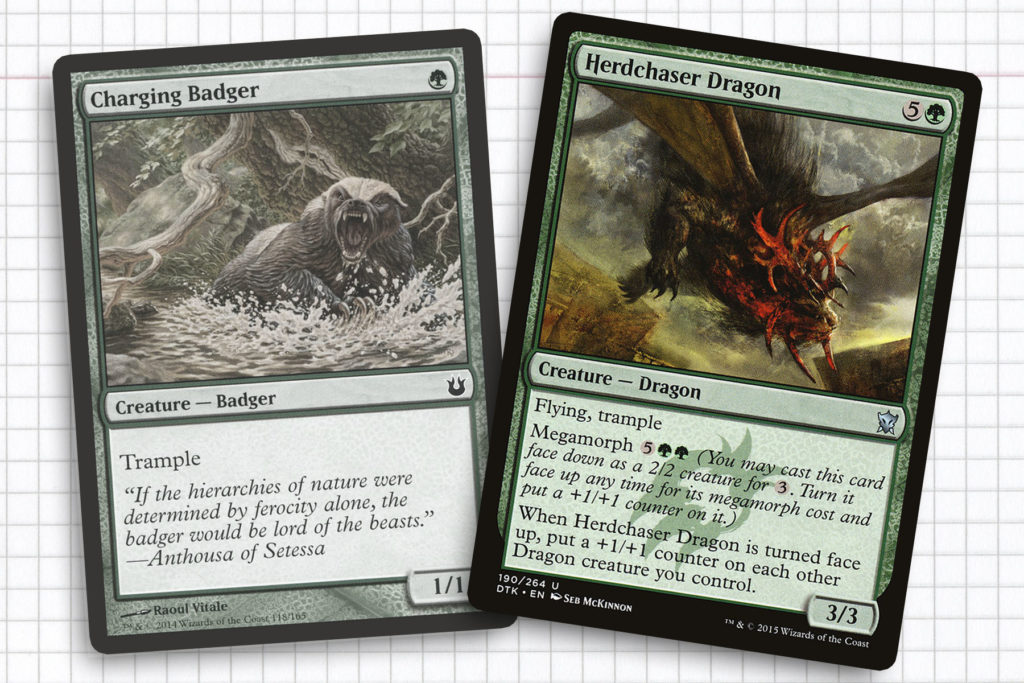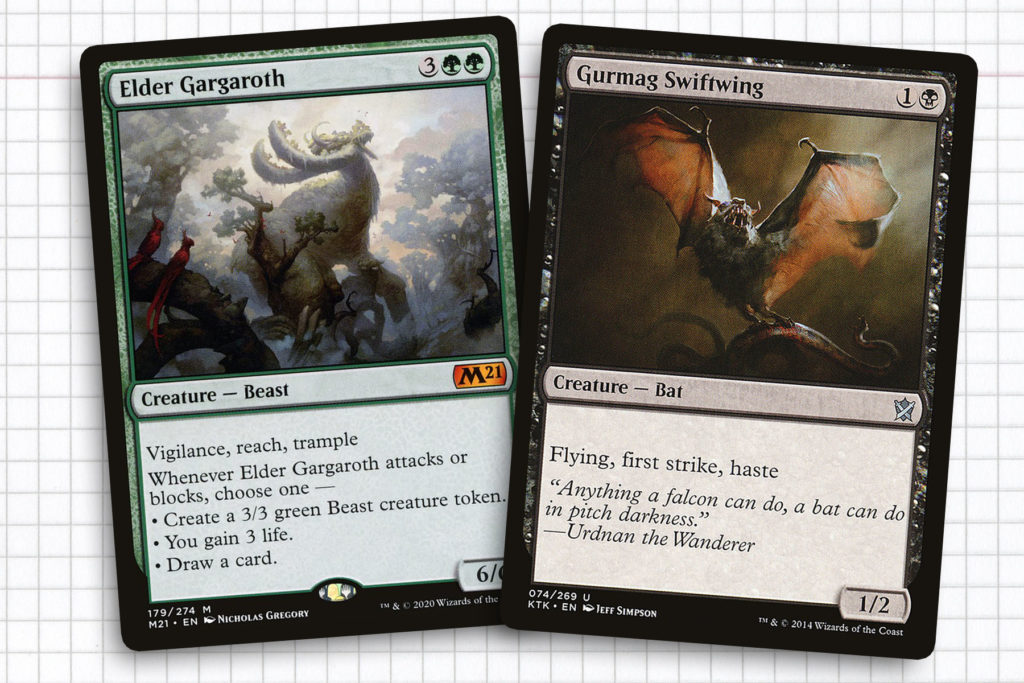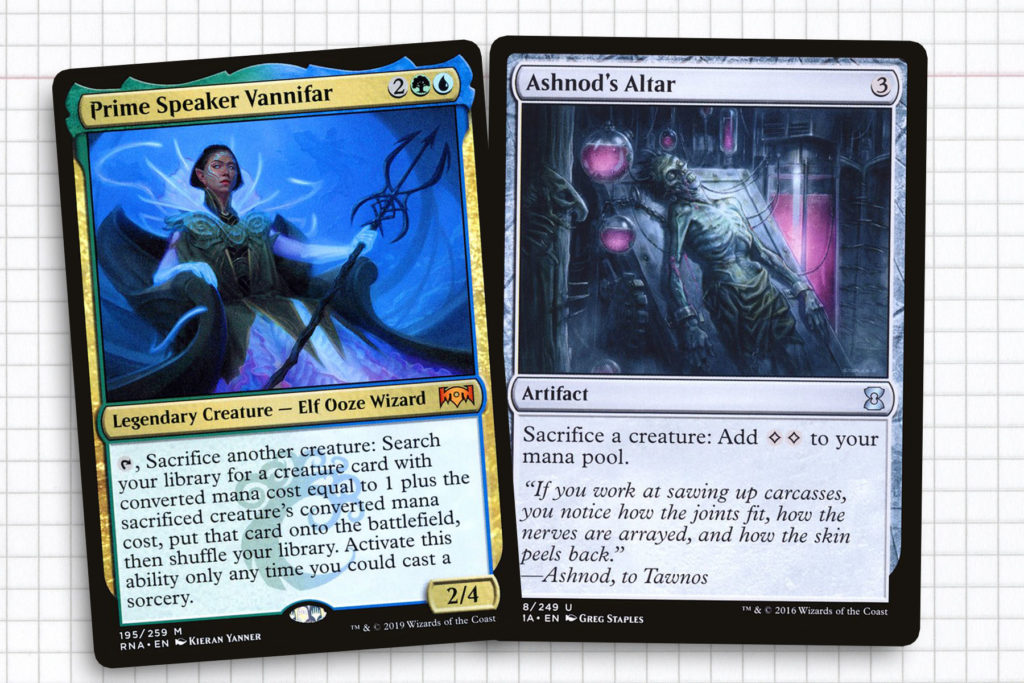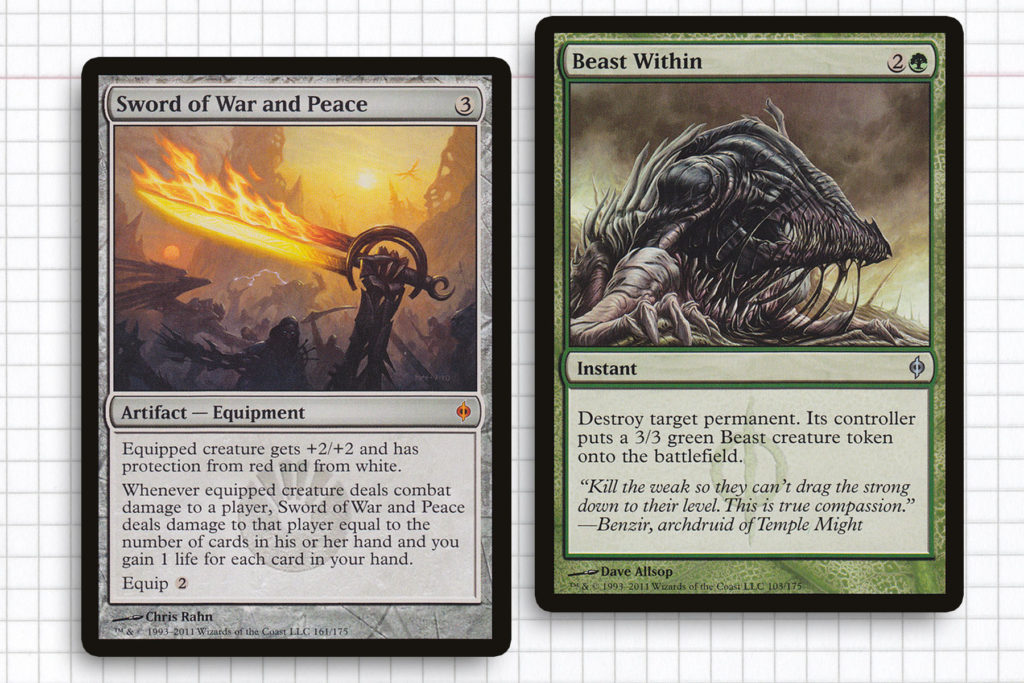One of the reasons why I dedicate entire articles to each general that comes out in a Commander product is because new generals are easily forgotten. It’s an unfortunate byproduct with how many legendary creatures they create for us every year. So I try to go back and make sure that I touch on these legendary creatures when the right idea strikes.
This week, I would like to talk about one of the generals that came out in Commander 2019 that initially inspired me but hadn’t gone anywhere until recently. I am an avid fan of playing toolbox decks from time to time—toolbox decks are in my toolbox of decks—so I knew I’d eventually make my way around to Rayami, First of the Fallen. As I cycle back through the recent generals, it’s a golden opportunity to find my ideal build.
In my original assessment of Rayami, I expressed some happiness from finally having some form of Soulflayer as a commander. I felt drawn to build my own Akroma, Angel of Wrath. Keywords feel powerful when they are grouped together, so a card that asks you to layer a bunch of them together becomes a puzzle with a strong emotional pay off. In that spirit, I began engineering an experience where I could build my own Akroma. And with that as my goal, I hope to surpass that experience in time.
General: Rayami, First of the Fallen
Creatures: Acid-Spewer Dragon, Archdemon of Unx, Aven Fleetwing, Avenger of Zendikar, Banehound, Bay Falcon, Belltoll Dragon, Bontu the Glorified, Cerulean Drake, Coast Watcher, Darkwatch Elves, Deepcavern Imp, Dire Fleet Ravager, Disciple of Malice, Drakewing Krasis, Elder Gargaroth, Fiend Artisan, Gurmag Swiftwing, Herdchaser Dragon, Prime Speaker Vannifar, Ramunap Hydra, Sadistic Hypnotist, Skylasher, Sylvan Caryatid, Uktabi Drake, Vampire Nighthawk, Vault Skirge, Zephyr Falcon
Artifacts: Ashnod’s Altar, Blade of the Bloodchief, Fireshrieker, Shadowspear, Sword of War and Peace, Talisman of Curiosity, Talisman of Dominance, Talisman of Resilience, Trailblazer’s Boots, Zagoth Crystal
Enchantments: Gift of Doom, Greater Good, Heartless Summoning, Perilous Forays, Phyresis, Vampiric Rites
Instants: Altar’s Reap, Beast Within, Costly Plunder, Nature’s Claim, Pongify, Rapid Hybridization, Return to Nature, Rush of Vitality, Withstand Death, Worldly Tutor
Sorceries: Cultivate, Diabolic Tutor, Gaze of Granite, Primal Growth, Rampant Growth, Skyshroud Claim, Villainous Wealth
Lands: 10 Forest, 3 Island, 12 Swamp, Breeding Pool, Command Tower, Dismal Backwater, Foul Orchard, Opulent Palace, Overgrown Tomb, Reflecting Pool, Temple of Deceit, Temple of Malady, Temple of Mystery, Watery Grave, Woodland Stream, Zagoth Triome

Tale of Two Philosophies
When I first set out to craft this deck, I was a little too fixated on trying to be as cost effective as possible. One of the lessons I learned from my Mairsil, the Pretender deck was card economy: trying to optimize every creature card in the deck to support my general. While that is a very important factor to consider, you never know when you’ll want to cast Vault Skirge and Perilous Forays on the same turn. During playtesting I found that it was far less essential to have cheap creatures out before Rayami made their appearance.
In testing, I found that skewing my mana curve too low made me a nonfactor in games, because outside of my general, none of my creatures could effectively threaten anything. As cool as it might have felt to put Charging Badger into a deck for the style points, it didn’t pay off because it was usually forced to block something before my general was cast. This wouldn’t be a problem if Rayami actually worked more like Mairsil, the Pretender, but I now believe a better philosophy is to look at them as more of a Skullbriar, the Walking Grave for keywords.
Additionally, a rules interaction I had not considered was how Rayami interacted with morph creatures. Based on the preconstructed deck that he came out of, this should have been obvious. You see, a facedown creature is exiled face up by default, so its characteristics apply and Rayami will gain any keywords. This is where Acid-Spewer Dragon, Belltoll Dragon, and Herdchaser Dragon enter the picture. Through our morphs, we get multiple keywords from color agnostic creature spells and decently sized fliers if the situation calls for them.

The Spirit of the Format
From experience, I can say that this deck captures some of the appeal Commander had for me in the early days and hits upon the feeling of gaining momentum throughout the first half dozen turns of a game. Commander never entirely felt like the format of eight-mana spells—other than in Jhoira of the Ghitu or Omnath, Locus of Mana. It was where I would have expected Dire Fleet Ravager and Ramunap Hydra to thrive though.
Big creatures with lists of keywords like Elder Gargaroth evoke fun to me. By extension I aimed to make a deck where we could buff Rayami substantially and make them into a list of keywords. This is why outside of more toolbox creatures like Darkwatch Elves and Disciple of Malice, I minimizes the number of creatures with only one keyword. This made Vampire Nighthawk one of my top choice creatures; and after realizing the importance of haste, I was happy to dig out copies of Banehound and Deepcavern Imp while discovering Gurmag Swiftwing in the process. And just like that, I find myself looking indiscriminately through old sets for any creatures that carry a healthy amount of keywords, ready to rediscover hidden gems.

Making Sacrifices
At this point it’s becoming rather contrived to say that I made a mistake in thinking that this deck was going to be a lot like Mairsil, but I’m surprised that it didn’t become clearer to me earlier. Being able to pick and choose your targets from the hand or graveyard is much different than depending on creatures to go to the graveyard while your general is there to witness it. This is why it was so important to have economical ways to sacrifice creatures.
Ashnod’s Altar, Greater Good, and Sadistic Hypnotist were my early top three picks for this purpose, as they require no mana investment while also getting us some form of card advantage. Perilous Forays and Primal Growth are both niche ramp spells I rarely see, but they both feel thematic for the deck and are what drove me to a simplified mana base of mostly basic land. And this deck needs to act like a toolbox to some extent, meaning that as contextually needed within a game, Fiend Artisan and Prime Speaker Vannifar may be searching out creatures like Aven Fleetwing, Coast Watcher, or Disciple of Malice. And Bontu the Glorified will likely play double duty: a sacrifice outlet that also grants our general indestructibility when the right moment comes along.

Focusing on Victory
One of the differences in this deck from your typical commander deck is that I wanted to lean into pinpoint removal, almost exclusively. When there is an ability that I would like my general to have from my opponent’s side of the field, I would prefer to have it on my terms. This is where a card like Beast Within becomes very valuable, because the token won’t impede my game plan. The same goes for Pongify and Rapid Hybridization. What I do want for a board wipe is Gaze of Granite, which will hopefully also be taking out utility permanents around the table that my opponents lean on.
Once our deck is really moving at full speed, the plan becomes winning in a fairly traditional Voltron way. Equipment like Fireshrieker or Sword of War and Peace and a well timed Phyresis should close out the game. Be warned though, I think it’s important to understand that this deck wants to survive under the radar into third place, before swiftly making this kind of move. Rush of Vitality and Withstand Death are for helping to turn that corner, dodging around a board wipe to catch the remaining opponents on the back foot and use the pile of acquired abilities to finish them off.
In sitting down to write this article, a big takeaway is that I assumed I would be mirroring lessons I learned in the past. In reflection, trying to carefully construct a Rube Goldberg deck takes a different finesse than what this deck ultimately became. I think defining the goal of the deck as “build your own Akroma” was a good direction to aim in, but something better came of it, even in my first build.
The realization I had with the introduction of the morph dragons was the most significant change in the direction of the deck. It supported the idea that larger creatures can have just as active of a role in the deck as smaller more efficient creatures, which in itself was a paradigm shift. This in itself is rather exciting, because it means that any possible return to Tarkir comes with the chance for more support as well. But that is a story for another day.
Ryan Sainio is a Graphic Designer who writes about EDH and the EDH community. He has been playing Magic: The Gathering since 7th Edition in 2002 and values flavorful and fun gameplay over competitively optimized decks.

